Is watermelon good for the liver and can it be eaten if you have liver diseases?
Watermelon is a favorite delicacy for many. The plant is native to the Kalahari Desert. It was grown in Egypt as early as the 20th century BC. Today there are about 1,200 varieties of watermelon in the world. The smallest fruit is dwarf - only 3-4 centimeters in diameter. The largest is 159 kilograms.
There is still debate as to whether this sweet fruit should be classified as berries, fruits, vegetables or pumpkins, because watermelon fits several descriptions of botanical species.
Breeders even managed to develop square and triangular watermelons. But the most remarkable quality of the plant is that it is very useful and is successfully used for cleansing and healing of the body. Watermelon is especially beneficial for the liver. However, first things first.
Compound

More than half (80%) of watermelon consists of water, so its calorie content is very small - only 27 kcal per 100 grams of product. But it is rich in useful amino acids, vitamins, and microelements. The table will tell you about the substances contained in watermelon.
| Microelements | Macronutrients | Vitamins |
| Aluminum | Potassium | B vitamins |
| Copper | Calcium | WITH |
| Selenium | Magnesium | E |
| Bor | Sulfur | RR |
| Zinc | Sodium | Niacin |
| Fluorine | Chlorine | |
| Iodine | Phosphorus | |
| Cobalt | ||
| Molybdenum | ||
| Nickel | ||
| Chromium | ||
| Rubidium | ||
| Strontium | ||
| Iron | ||
| Lithium |
How does watermelon affect the liver?
There are many effective remedies in folk medicine for the treatment of liver diseases. Watermelon is one of them.The question of whether it is possible to eat it if you have liver diseases rarely arises.
The fruit has long been considered a universal means of cleansing this organ in the following cases:
- poisoning;
- intoxication due to exposure to drugs;
- alcohol intoxication.
Melon berries have a unique property - they perfectly cleanse liver cells, remove waste and toxins. Watermelon is often included in the diet, for example, for hepatitis A (Botkin's disease). The sweet pulp saturates the body with useful substances. Watermelon has a beneficial effect on the digestive system, which also has a positive effect on liver function.

Benefit
Let's consider how watermelon affects the human body.
Folic acid, which is part of it, normalizes cerebral circulation. As a result, memory improves and a person reacts less to stressful situations. Watermelon pulp acts as a sorbent, ridding the body of harmful and toxic substances, and has a positive effect on vision, immune, cardiovascular, digestive and nervous systems. The diuretic properties of the berry-vegetable contribute to the prevention and treatment of urinary and cholelithiasis.
Useful waste
Seeds and watermelon rinds, which are usually thrown away, are actually a valuable and healthy product. Healthy oil is prepared from seeds rich in carboxylic and linoleic acids.. The seeds themselves are used as a hair restorative. The seeds are also useful for the genitourinary system. There are as many vitamins as in the pulp.
The peels are considered even more beneficial than the pulp. They contain fiber, proteins, pectin, amino acids, but there is much less sucrose and water than in the inner part. In folk recipes, watermelon peel is used:
- for cleansing of toxins;
- as a diuretic and choleretic agent;
- to remove phlegm;
- as a pain reliever.
What harm can it do?
Watermelon can be harmful ulcer and gastritis with tissue erosion. The pulp contains hydrochloric acid, which increases damage to the diseased mucosa. Problems are also possible with kidney disease - the diuretic effect, which is useful in many cases, can cause dehydration.
The harmful qualities of melon berries include an allergic reaction.
Dangerous "filler"
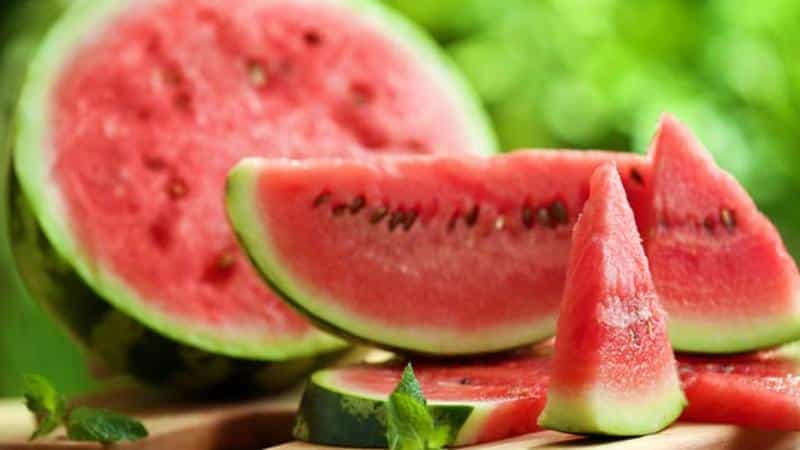
For watermelon to be healthy, it is important that it is ripe and of good quality. Fruits are often grown using nitrates. They stimulate the striped berry to ripen faster and help increase its volume. If too much nitrates are used, the human body will suffer serious intoxication. Instead of getting better, you may end up in the hospital.
To avoid such troubles, it is advisable to buy watermelons in trusted places, from a seller who has a sanitary certificate on the quality of the product. It's best to avoid buying second hand on the roadside.
Large yellow veins and an excessively bright color of the pulp, as well as the waxiness and unnatural shine of the peel indicate about high nitrate content. If after eating watermelon you soon feel nausea, dizziness and (or) vomiting, consult a doctor immediately. Poisoning causes serious harm to the body.
Important! For children under 2-3 years of age, watermelon is introduced into the diet extremely carefully, in small doses and after consultation with a pediatrician. The baby’s condition is carefully monitored, and the product chosen is of exceptional quality.
For liver diseases
Is watermelon good for liver diseases? The answer is clear: this is a very valuable product for the organ.Firstly, it helps improve the functioning of the gastrointestinal tract, which has a positive effect on liver function. Secondly, it eliminates toxins and other harmful compounds. Thirdly, it clears blockages in the bile ducts. Fourthly, it prevents fat deposits in the liver parenchyma from developing or increasing.
Important! Cirrhosis, hepatitis, fatty hepatosis are serious diseases. Their treatment needs to be approached comprehensively. And be sure to consult with your doctor before using any, even the most harmless-looking, folk remedies.
To help with cirrhosis
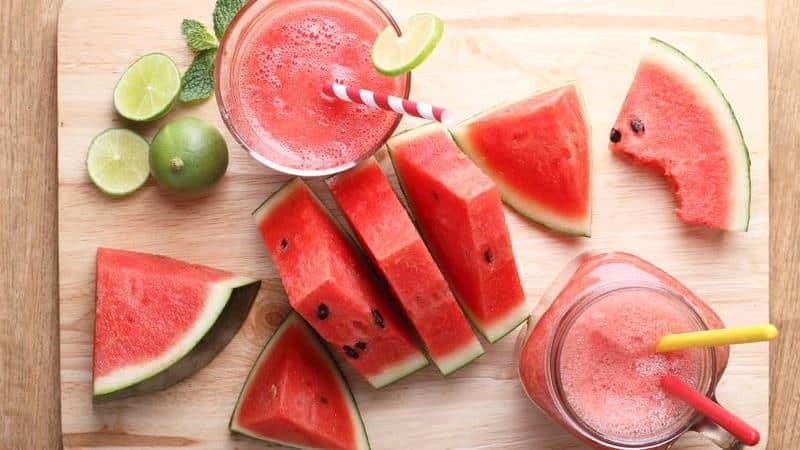
Cirrhosis is a serious disease that cannot be overcome without the help of doctors. But traditional medicine helps to significantly improve the condition. Changing your diet also significantly improves the course of the disease. Among the permitted and recommended products for consumption for cirrhosis, our hero is watermelon. Its vitamins and minerals will be very useful for the patient. By consuming at least 2.5 kilograms of pulp per day, you will cleanse the liver of harmful substances and improve its functioning.
Hepatitis will win
As an auxiliary therapy for any form of hepatitis, liver cleansing with watermelon has proven itself to be excellent. In cases of mild hepatitis A, doctors sometimes do not even prescribe medications.
If a person gets sick during the watermelon ripening season, it is simply recommended to eat the berries as much as you want in conjunction with your diet and daily routine. Watermelon will cleanse the liver and help it recover. Due to the diuretic and cleansing effect, the disease is quickly “washed out” from the body.
Fatty hepatosis
For fatty liver disease, diet is the first and perhaps the most important step in treatment. Diet and medications help alleviate the condition of the diseased liver and gradually restore its structure. Watermelon also promotes health.
For patients, products containing pantogamic acid, which is abundant in this berry, are useful. As we have already said, watermelon gently cleanses the liver and is low in calories. Plant fiber and the beneficial substances included in its composition help to establish the proper functioning of the organ and the digestive system as a whole.
How much to use and how
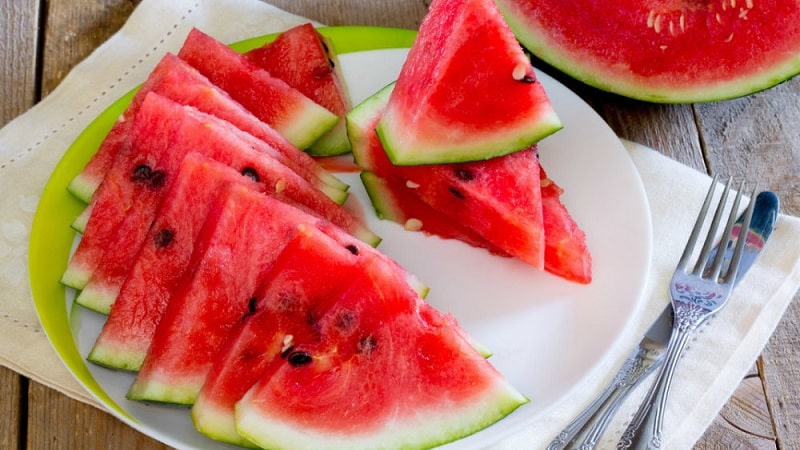
In most cases, experts recommend including watermelons in the diet for liver diseases. It is best to do this during the season, at the end of August, when products of higher quality are supplied to the markets, not oversaturated with nitrates, and therefore healthy.
Even if your doctor has given you permission to eat watermelon, don’t go heavy on it right away. Start taking one or two lobes and monitor the body's reaction. You can gradually increase your consumption to 2.5 kilograms in the absence of contraindications.
Attention! This is exactly how they recommend starting a watermelon cleanse - taking a small amount for five to seven days before starting the cleanse itself. If you experience pain, see a specialist.
Liver cleansing with watermelon
For a liver cleanse to be successful, you need to prepare in advance. If you have not followed any diet before, it is advisable to give up fried, fatty, salty, smoked and pickled foods, baked goods, sweets, and meat within a week.. Lenten food is preferred.
The consumption rate of cleansing berries is calculated individually. For 10 kg of body weight there is 1 kg of watermelon pulp per day.
Why clean?
Liver health is very important. The liver is the “chemical plant” of our body. It neutralizes toxic substances and the results of the vital activity of microorganisms.In addition, the organ participates in the synthesis of many substances and serves as a “warehouse” for a number of vitamins.
A polluted environment, stress, medications, alcohol and overeating affect the condition of our liver. Even a healthy person is susceptible to one or more damaging factors, and his liver suffers. What then can we say about an organ that is already sick? But we can cleanse the liver of waste and toxins accumulated in it. Watermelon is the first assistant here.
How to clean
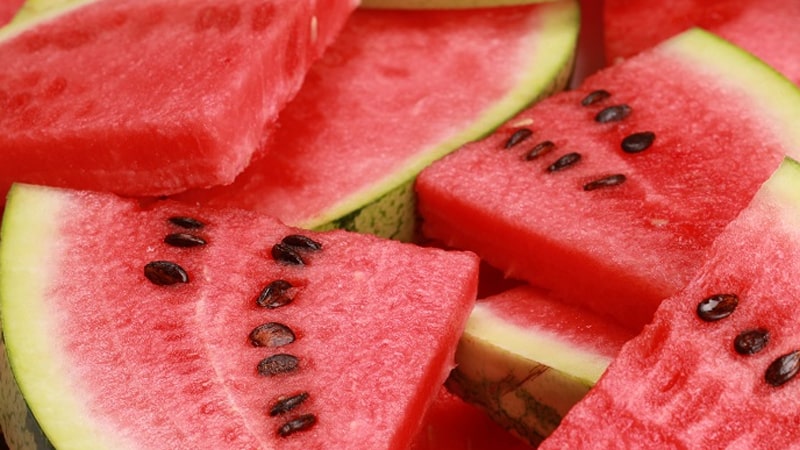
The watermelon cleanse course lasts 7 days. During this time, you can only eat watermelon (how to calculate the consumption rate is described above) plus 2-3 pieces of black rye bread. The norm of watermelon is divided into 3-5 doses, as convenient for you. You can drink water, but with caution, because melon berries already contain a lot of liquid.
Finishing the cleaning correctly
It is important not only to carry out watermelon cleaning correctly, but also to complete it. On the seventh day you will have to get up at night (at three o’clock) and take a bath, drinking two capsules of No-shpa. Warm water will help the bile ducts relax and open, which will facilitate the speedy evacuation of sand, waste, toxins or stagnant bile.
After the bath, perform a cleansing exercise: stand on your toes and sharply lower your entire foot. Repeat the movement 10 times. Instead of exercising, you can jump a little. If pain appears in the right hypochondrium, you must also take No-shpa and lie in the bath again.
You need to come out of the cleanse gradually. You can’t immediately pounce on sweets or meat - this can ruin the whole effect. Introduce foods gradually over the course of a week. Do not overload the gastrointestinal tract and liver.
Caution doesn't hurt
Watermelon has few contraindications.Diarrhea and some chronic diseases, especially in the acute stage, are a reason to refuse or significantly reduce the rate of consumption of the product. Such diseases include:
- gastrointestinal diseases;
- pathologies of the genitourinary system;
- pancreatitis;
- diabetes;
- large stones in the gall bladder.
For such diseases, you should consult your doctor about the benefits and risks of taking watermelon or medicinal prescriptions based on it. For diabetes mellitus, the consumption of striped berries is allowed in small quantities, but only after consulting a doctor. He will also help you choose the right dose depending on the course of the disease.
Do no harm! If you are prone to gallstones, be especially careful. If you do not know the size of the stones, instead of relieving the condition, you will get an aggravation. Large stones can begin to move and clog the ducts.
Why does watermelon hurt your liver?
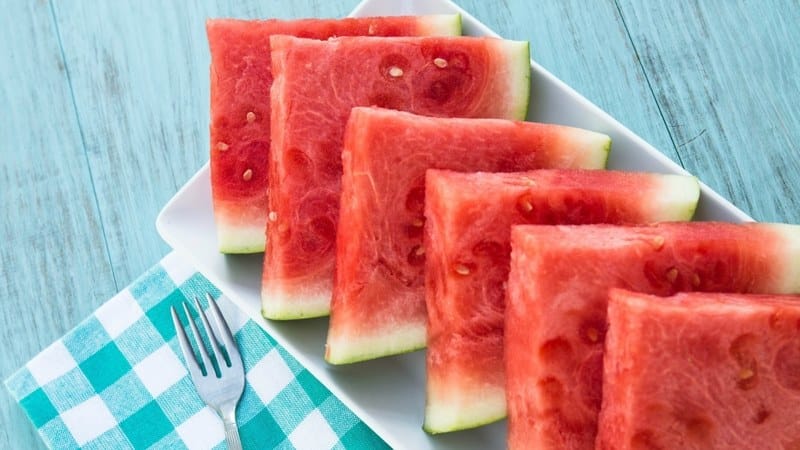
With correctly selected doses and following the recommendations of the attending physician, no pain should occur, except perhaps after a cleansing bath. But why does watermelon still cause pain in the right side? Pain may appear in diseases where watermelon is contraindicated. Sometimes a person does not know about them before starting cleansing.
Pain also occurs due to pathologies of the kidneys, stones in them or in the gall bladder. Sometimes renal pain radiates to the right side, and the patient mistakes it for liver pain. Cleaning with watermelon, which is rich in nitrates, can also cause pain. Nausea, vomiting, and stomach upset may follow. This is a reason to urgently consult a doctor.
Choosing the right watermelon
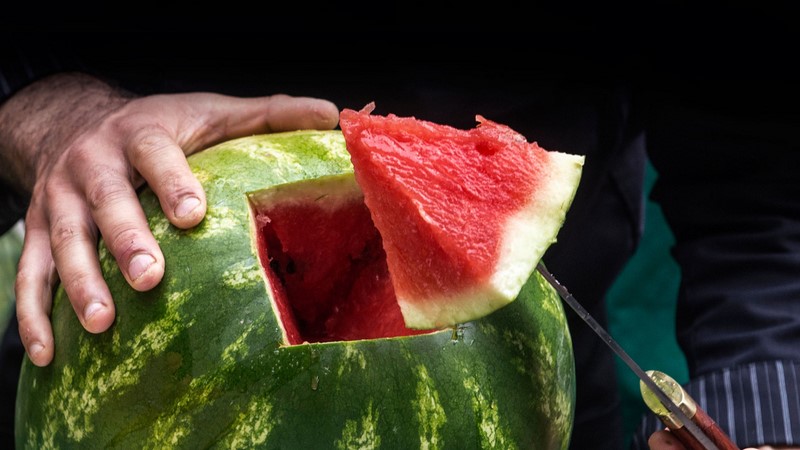
In order for watermelon to bring maximum benefits, you need not only to follow the recommendations for its use, but also to choose the right one.It is better to buy fruits in August, when they ripen naturally. Before eating, be sure to wash watermelon with warm water and soap.
You should not take fruits that are damaged or have a cut piece. If the peel was dirty, germs could get inside, and instead of benefit, there is a risk of ending up in a hospital bed.
Some tips for choosing ripe, quality fruit:
- the tail of a watermelon ripened in the garden is dry, you will not see any traces of a cut on it;
- the stripes on the peel should be clear, bright, the skin itself should be elastic;
- the yellower the color of the characteristic light spot on a watermelon, the riper it is (the spot appears where it lay during growth);
- if you knock on a ripe watermelon, you hear a ringing, booming sound; a dull sound is produced by under- or overripe fruit.
Conclusion
Watermelon is a sweet and healthy delicacy that not only gives you pleasure. Cleansing and healing are the beneficial functions of striped berries. Especially if you choose it correctly, take into account contraindications and doctor’s recommendations.
The liver, freed from waste and toxins, will work better after cleansing with watermelon. The result will not be long in coming. Your mood will improve, you will feel cheerful, light, and the condition of your skin and hair will also make you happy. Perhaps annoying diseases will recede. Many have felt the healing power of watermelon; anyone can do this.